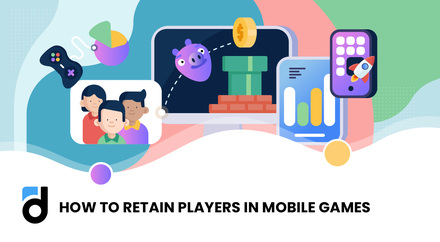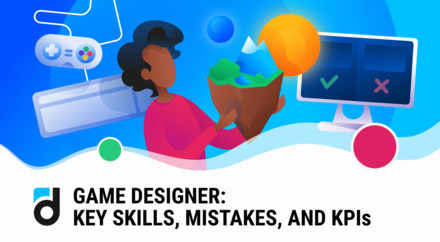Experience confirms that people often churn out during or after completing the tutorial. For instance, there was a farming game and the players churned out of this game. After series of experiments, it became clear that the game had quite high density of the explanations of mechanics: the mechanic was demonstrated to the user, then 2-3 approvals, the next mechaniс was demonstrated, then 2-3 approvals, a bit of free time, more mechanics demonstrated. They used analytics to catch the most important moment: there was no need for such a long entry into the game, it's better to give a "piece" of the gameplay and postpone the explanations of mechanics for later.
Can we now state unequivocally that it's better to let the players understand the game themselves, reducing the density of training in the tutorial? It totally depends on the game:
-
Some claim that short tutorial with the high conversion rate in terms of the long run lose to a longer tutorial with initially poorer conversion (less involvement, strange as it may sound).
-
Others say that making long and tedious tutorial with the explanation of every sneeze - it is also a mistake. In devtodev's practice, we had a story with the tutorial that explained everything too long, and by shortening it, we increased the conversion without hurting the retention of the project.
Read more: Analyze 3 Revenue Sources - Ads, In-apps and Subscriptions
Technical Optimization of Tutorial
It is important to pay attention to the technical issues of the tutorial. We analyze not only the path of the user, but also the download of the tutorial, especially when talking about mobile device.
Case study: in devtodev you have an opportunity to analyze in detail the first session of the player, to build a funnel of more than 100 steps and find the problem areas. One of our customers integrated a lot of steps, including the invisible steps when levels, textures were loading and so on. And it turned out that the biggest churn happened at those invisible steps — user didn’t wait for the download. The developers had to optimize the tutorial technically, that helped them to significantly increase retention rate.
Calculate Retention
It is necessary to distinguish between the classical retention and rolling retention.
-
Classical retention: user is considered as retained if they logged into the game N-days after the download.
-
Rolling retention: user is considered as retained if ерун logged into the game N-days after the download or later.
This is why the rolling retention shows better results, and it is often used to tell the investors about retention, but it is not entirely correct. For most work tasks the classical retention is used (at least because of all the benchmarks on the Internet taking it into account). For mobile games it is often measured over a period of 30 days, as follows: 0 day, 1st day, 3rd day, 7th day, 14th day, and also 28th day or 30th day.
If we talk about the big games that can be called GaaS (game as a service), the long-term retention makes sense, as it correlates more with the revenue. Our research indicates that the longer the player continues to play in the game, the higher the likelihood of their purchase in each subsequent day is, and the larger thair every next payment. Thus, long-term retention increases the audience and grows its monetization potential. Can be considered the retention of 180 or 360 days.
Anyway, retention is a very sensitive metric, it is like no other reflects the loyalty of the players. In particular, here are the factors that retention may depend on, in our opinion:
-
time zones
-
the weather and the time of year
-
technical problems
-
devices
-
quality of the tutorial
-
day of the week, the user was registered on
-
and, of course, the quality of the game itself, well worked FTUE, the presence of game loops and goals for the player.
Read more: Retention is Dropping - What to Do?
Analyze Core Gaming Loop
Core loop can be analyzed with the help of a funnel. You must specify the correct sequence of steps in accordance with the objectives and steps of the core loop, set the time of passing for each step and watch the users taking them. With the help of such graph, you can either see that the mechanics do not work, or they are not perceived by users. Also during construction process of such a report it is useful to take into account the levels and the number of attempts spent on their progress.
A bit more:
-
it’s necessary to consider that in f2p-games there is such a moment, that money compensate the speed or efficiency of game progress;
-
it makes sense to separate the funnels, to be able look separately at the progress of paying and non-paying users;
-
keep it impossible to spend a lot money in order to go through the whole game at once. For example, here is the case study form Card Battler: the player buys a pack with powerful cards, starts passing all levels really quick, as a result loses interest to the game and falls in churn. So we are losing the paying user.
Read more: Best Game Analytics Platform: devtodev vs DeltaDNA
Track the Right Events
Here is the list of events that makes sense to track (to pass to the analytical system) to understand the picture of the user behavior in the game:
-
for marketers it will be very useful to track the traffic channels, there are some special tools for that;
-
first session, tutorial funnel — analyze them thoroughly to see players churn on the first steps;
-
events of entries and exits from the session: to calculate the retention;
-
conversion into sales: both in-app purchases (for real money) and in-game purchases (for virtual currency), to be able to analyze demand for goods and calculate the consumer basket;
-
attempts to progress through the levels: to calculate the conversion by the level of difficulty in the game;
-
finally, technical problems: to know about them and fix them. This is my basic set.
It is important that a set of steps allows to build a funnel for all key user actions: payment, level progress and so on.
Read more: Game Level Progression
Real Case Studies that Confirm the Necessity of Gaming Analytics
Case 1: In one of the games we saw that the players fall into churn pretty early. It was a Trading Card Game, and we realized by analyzing the behavior of the users, that the players did not have a long-term goal. They simply lost interest in collecting cards. As a result, we decided to use the so-called method "to hang a carrot": we invented an award for the set of cards. The retention rates increased significantly, by 20%.
Case 2: We had a game with an internal free market. We realized that our revenue is reduced, but could not understand why. We toiled for more than three days, trying to understand the reasons. We were not able to see how much money did players have on hands, we could not see the goods flow. Finally, we found out that our players duplicated the in-game items, there were becoming more and more. We learned about the existence of the black market, and realized that some people earned in our project even more money than we did. It was the original detective story.



















































































































































































































































































































































































